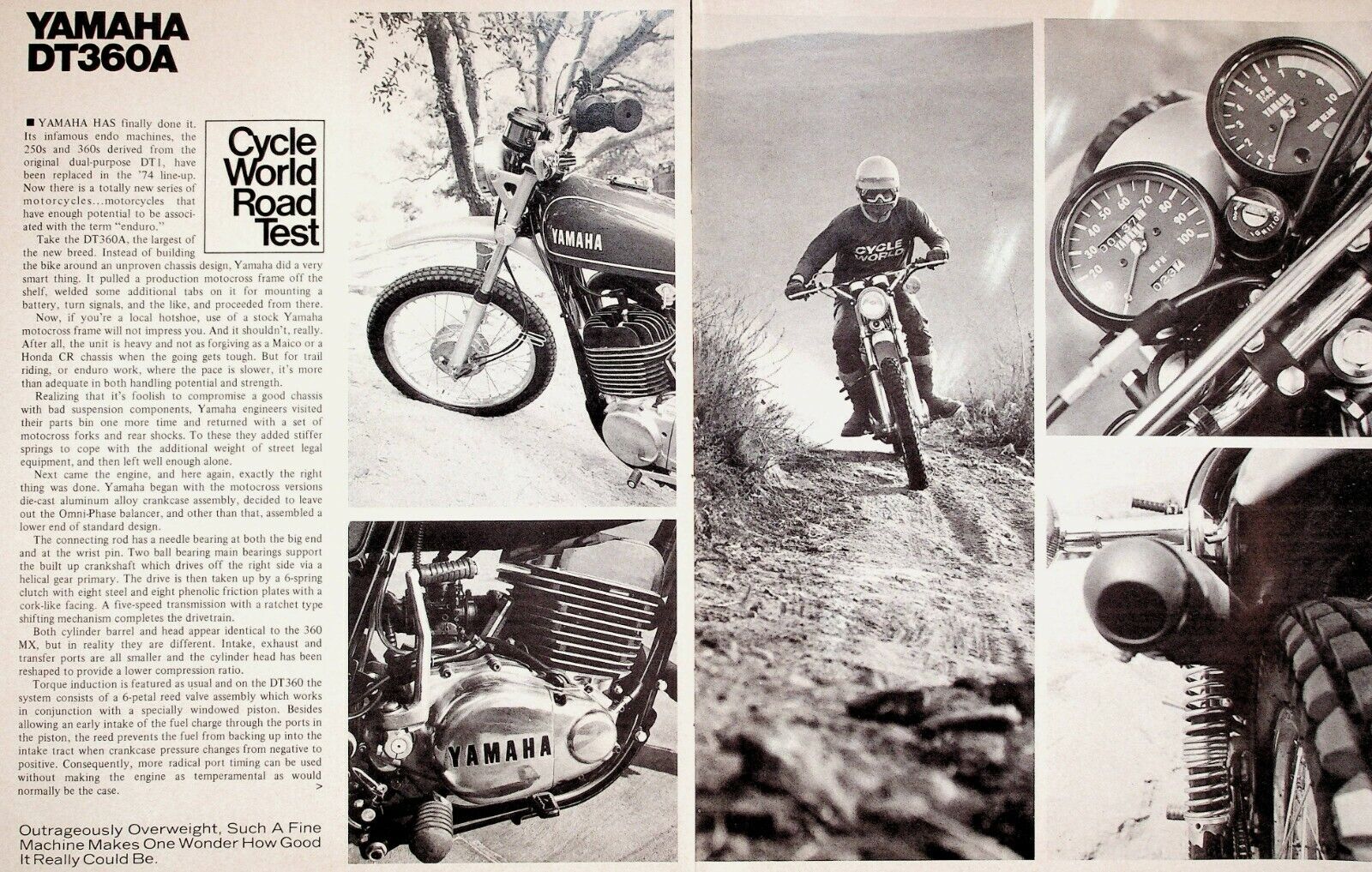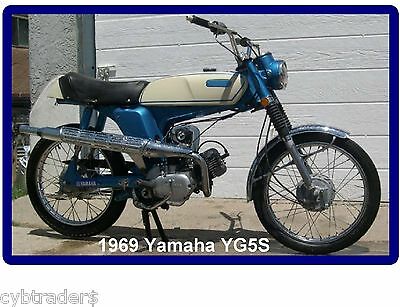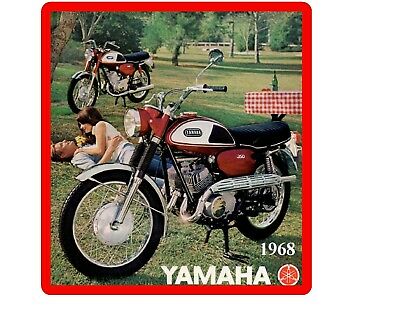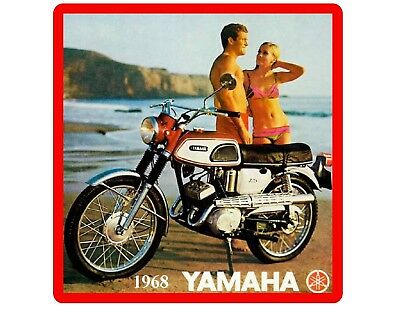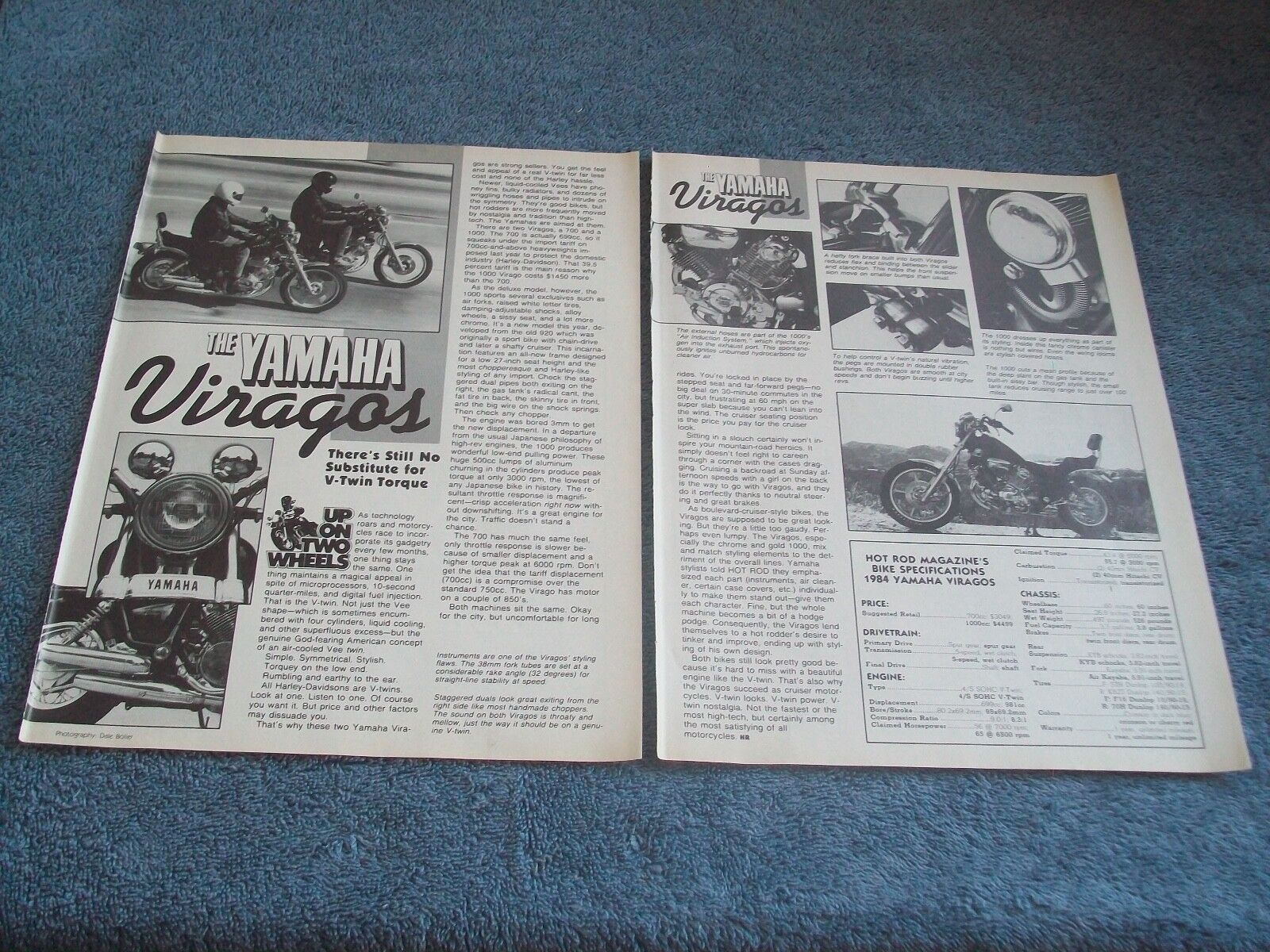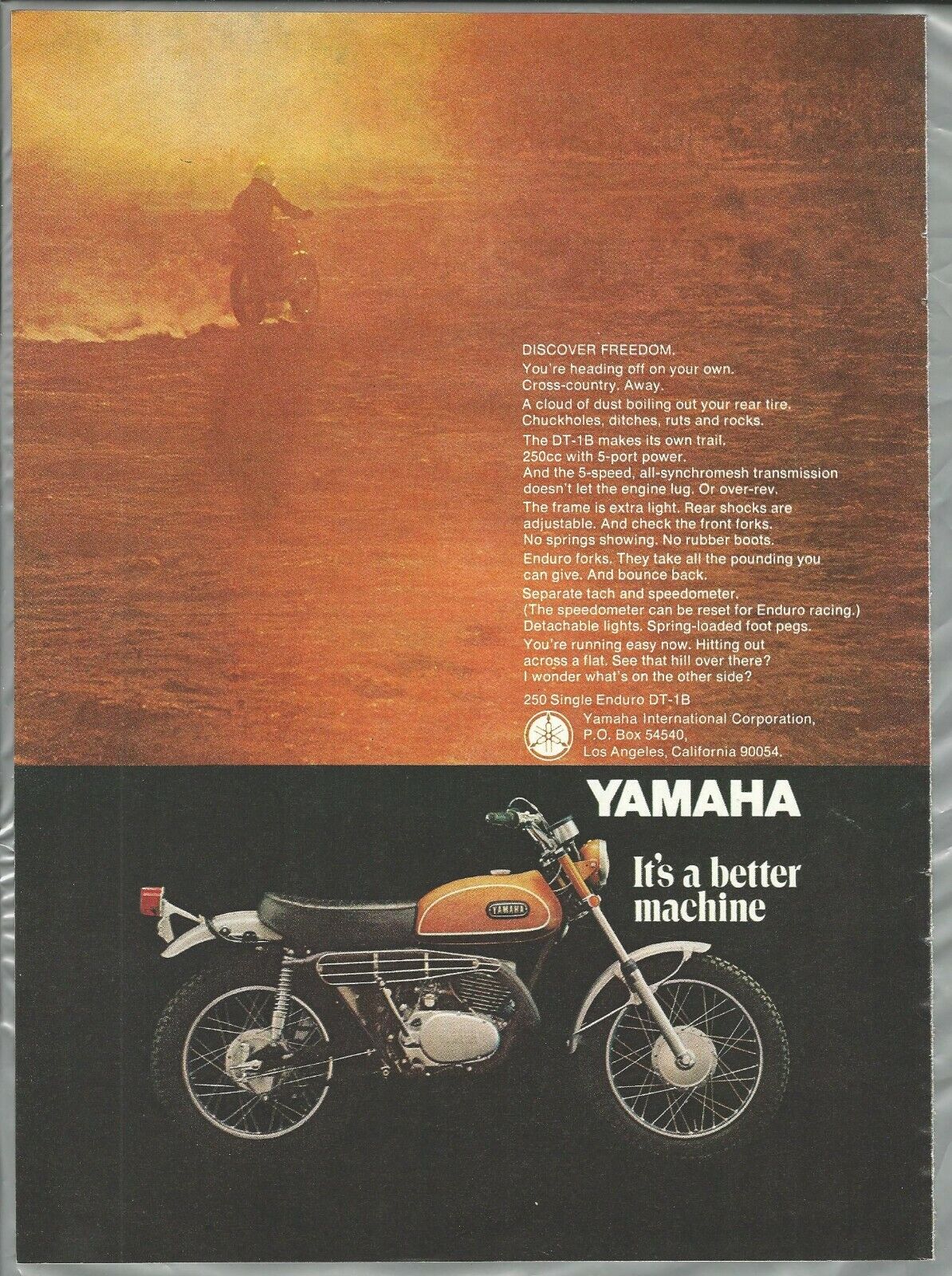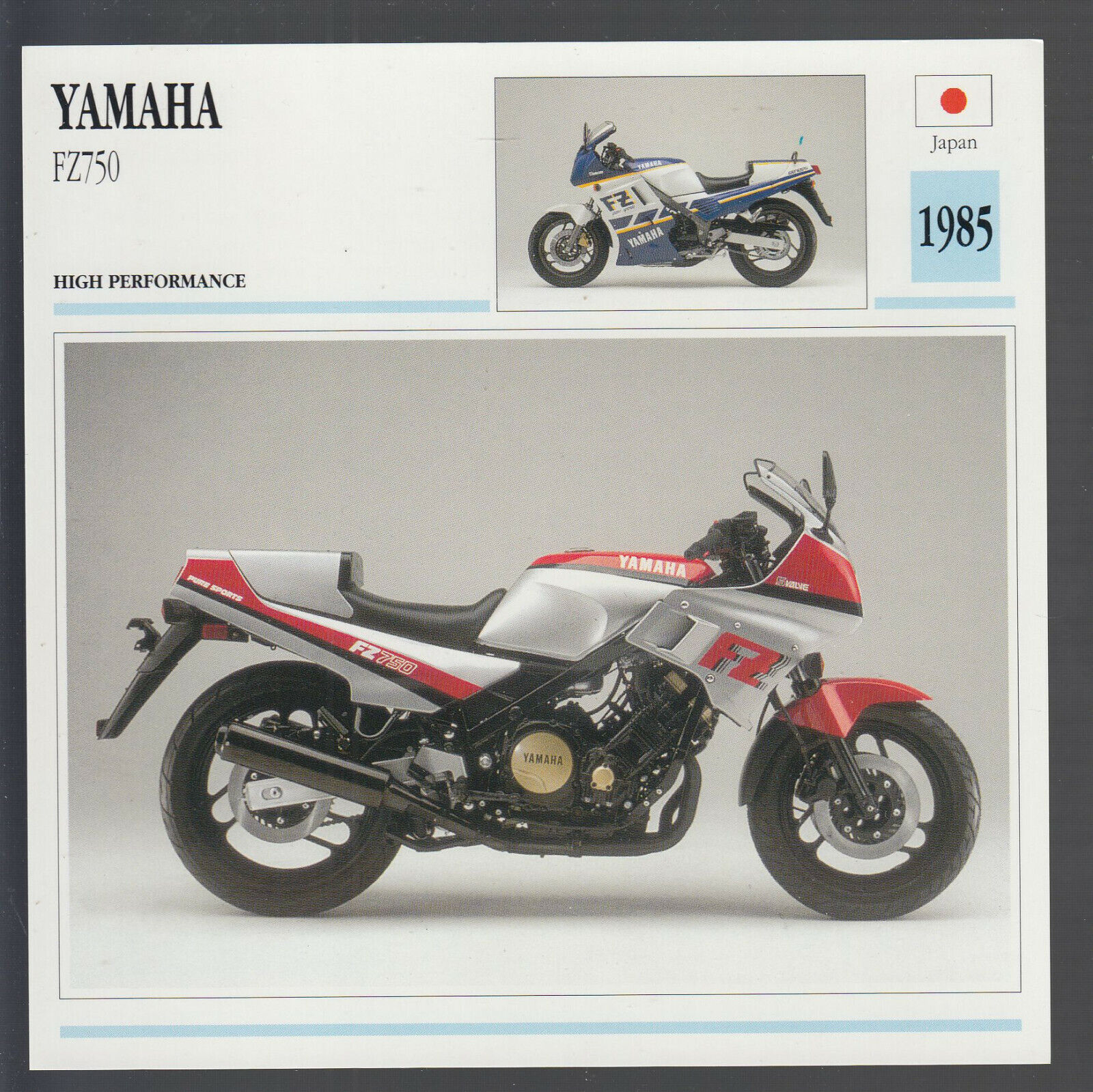-40%
1974 Yamaha DT360A - 9-Page Vintage Motorcycle Road Test & Tech Article
$ 7.43
- Description
- Size Guide
Description
1974 Yamaha DT360A - 9-Page Vintage Motorcycle Road Test & Tech ArticleOriginal, Vintage Magazine Article
Page Size: Approx. 8" x 11" (21 cm x 28 cm) each page
Condition: Good
YAMAHA
DT360A
Road
Test
■ YAMAHA HAS finally done it.
Its infamous endo machines, the
250s and 360s derived from the
original dual-purpose DTI, have
been replaced in the ’74 line-up.
Now there is a totally new series of
mo tor cycles... motorcycles that
have enough potential to be associ-
ated with the term “enduro.”
Take the DT360A. the largest of
the new breed. Instead of building
the bike around an unproven chassis design, Yamaha did a very
smart thing. It pulled a production motocross frame off the
shelf, welded some additional tabs on it for mounting a
battery, turn signals, and the like, and proceeded from there.
Now, if you’re a local hotshoe, use of a stock Yamaha
motocross frame will not impress you. And it shouldn’t, really.
After all, the unit is heavy and not as forgiving as a Maico or a
Honda CR chassis when the going gets tough. But for trail
riding, or enduro work, where the pace is slower, it’s more
than adequate in both handling potential and strength.
Realizing that it’s foolish to compromise a good chassis
with bad suspension components, Yamaha engineers visited
their parts bin one more time and returned with a set of
motocross forks and rear shocks. To these they added stiffer
springs to cope with the additional weight of street legal
equipment, and then left well enough alone.
Next came the engine, and here again, exactly the right
thing was done. Yamaha began with the motocross versions
die-cast aluminum alloy crankcase assembly, decided to leave
out the Omni-Phase balancer, and other than that, assembled a
lower end of standard design.
The connecting rod has a needle bearing at both the big end
and at the wrist pin. Two ball bearing main bearings support
the built up crankshaft which drives off the right side via a
helical gear primary. The drive is then taken up by a 6-spring
clutch with eight steel and eight phenolic friction plates with a
cork-like facing. A five-speed transmission with a ratchet type
shifting mechanism completes the drivetrain.
Both cylinder barrel and head appear identical to the 360
MX, but in reality they are different. Intake, exhaust and
transfer ports are all smaller and the cylinder head has been
reshaped to provide a lower compression ratio.
Torque induction is featured as usual and on the DT360 the
system consists of a 6-petal reed valve assembly which works
in conjunction with a specially windowed piston. Besides
allowing an early intake of the fuel charge through the ports in
the piston, the reed prevents the fuel from backing up into the
intake tract when crankcase pressure changes from negative to
positive. Consequently, more radical port timing can be used
without making the engine as temperamental as would
normally be the case.
>
Outrageously Overweight, Such A Fine
Machine Makes One Wonder How Good
It Really Could Be...
14862-AL-7402-08
